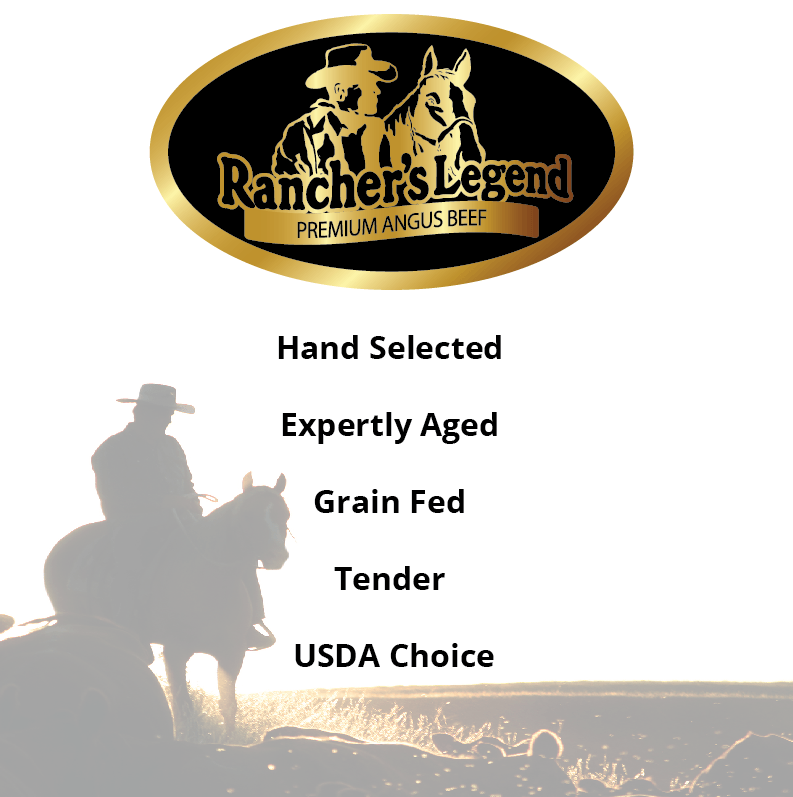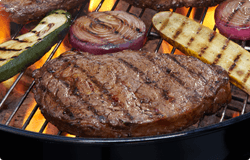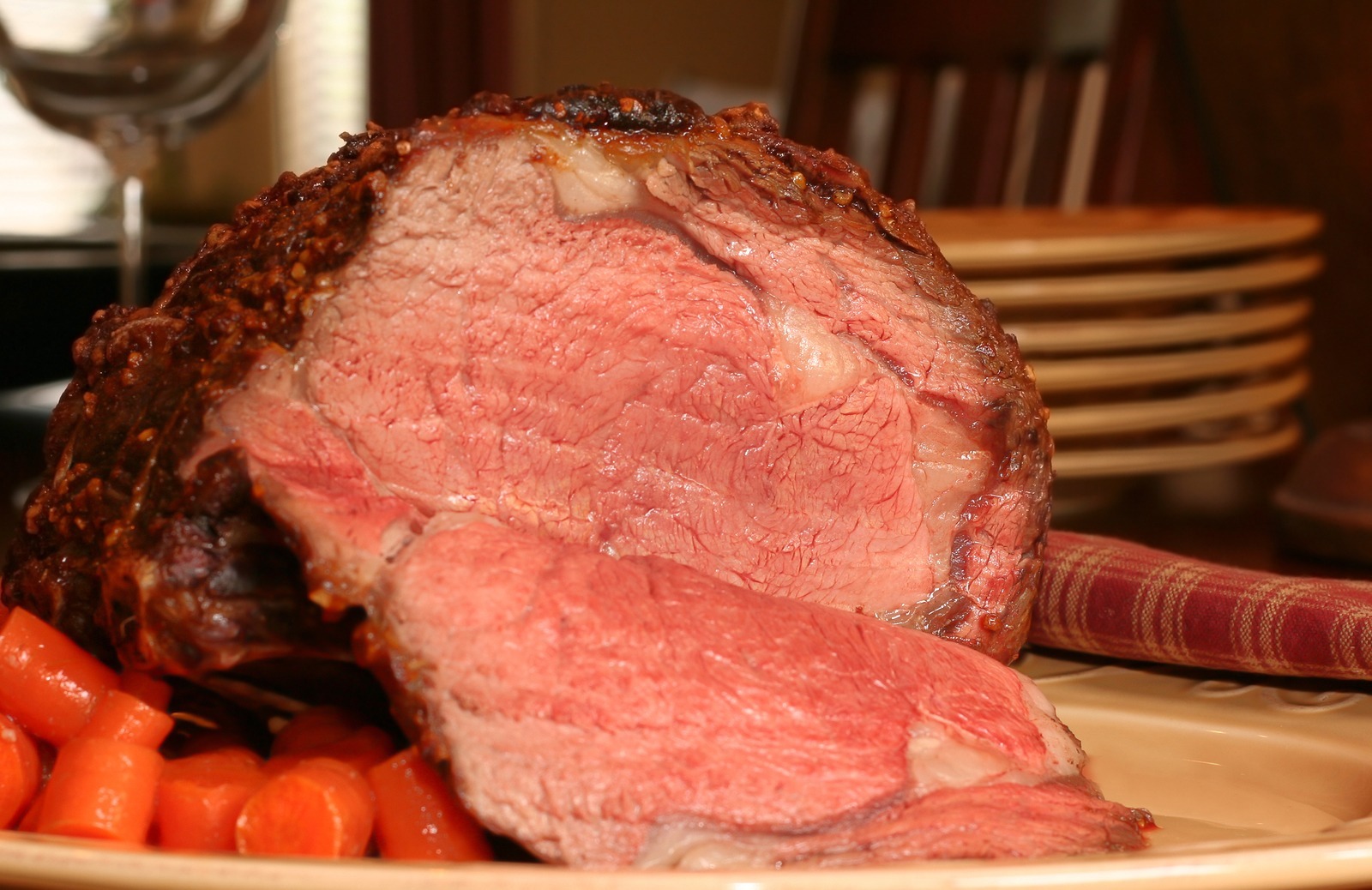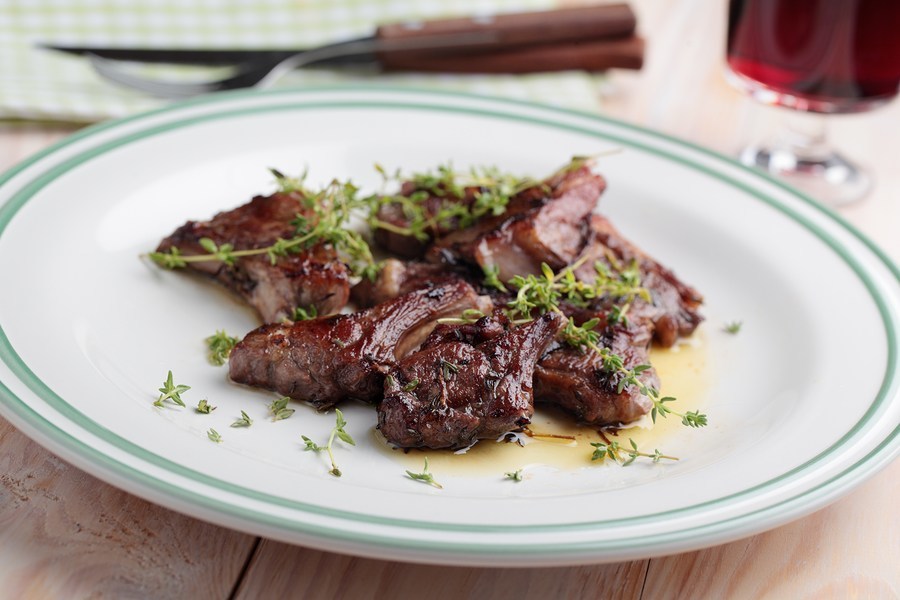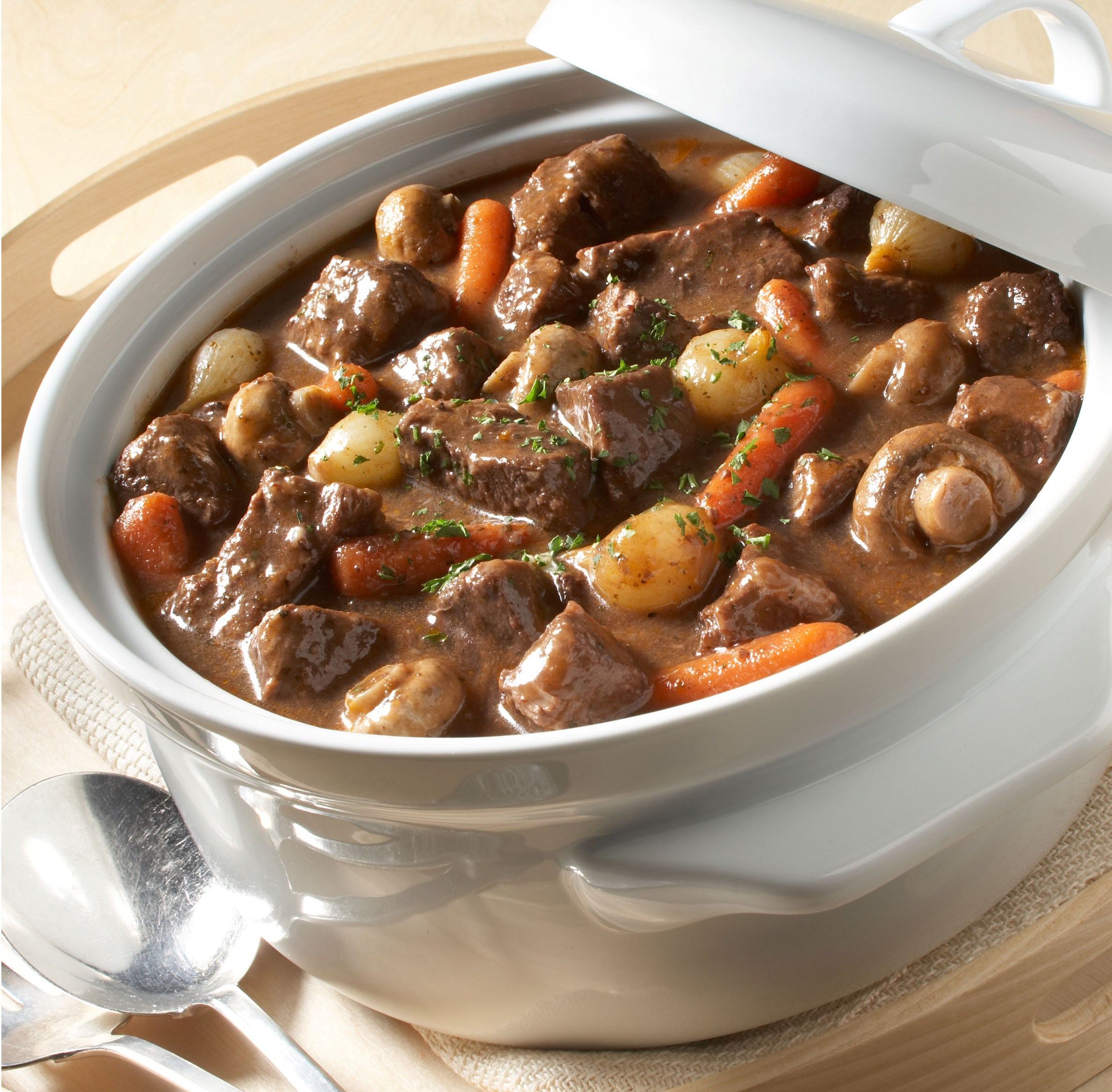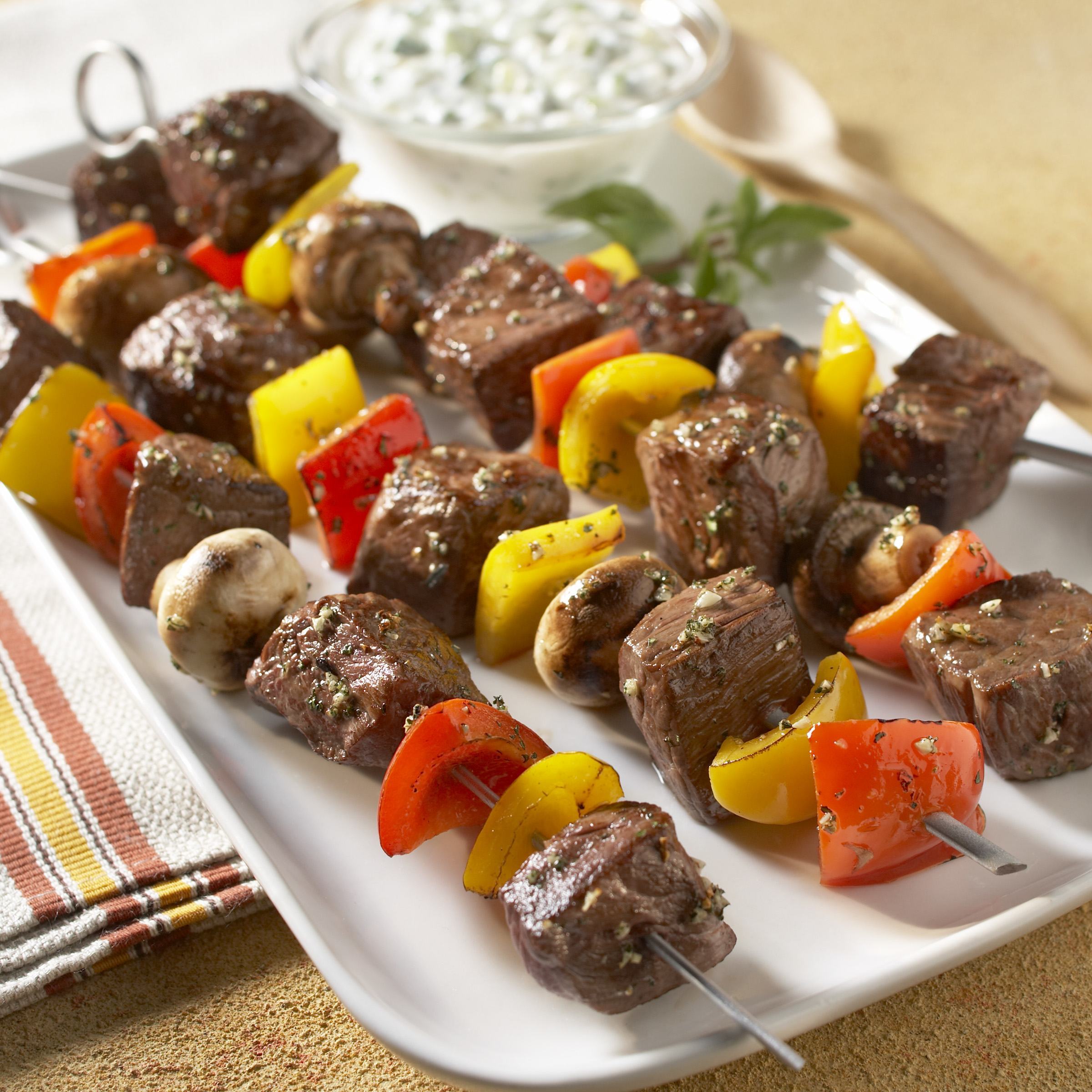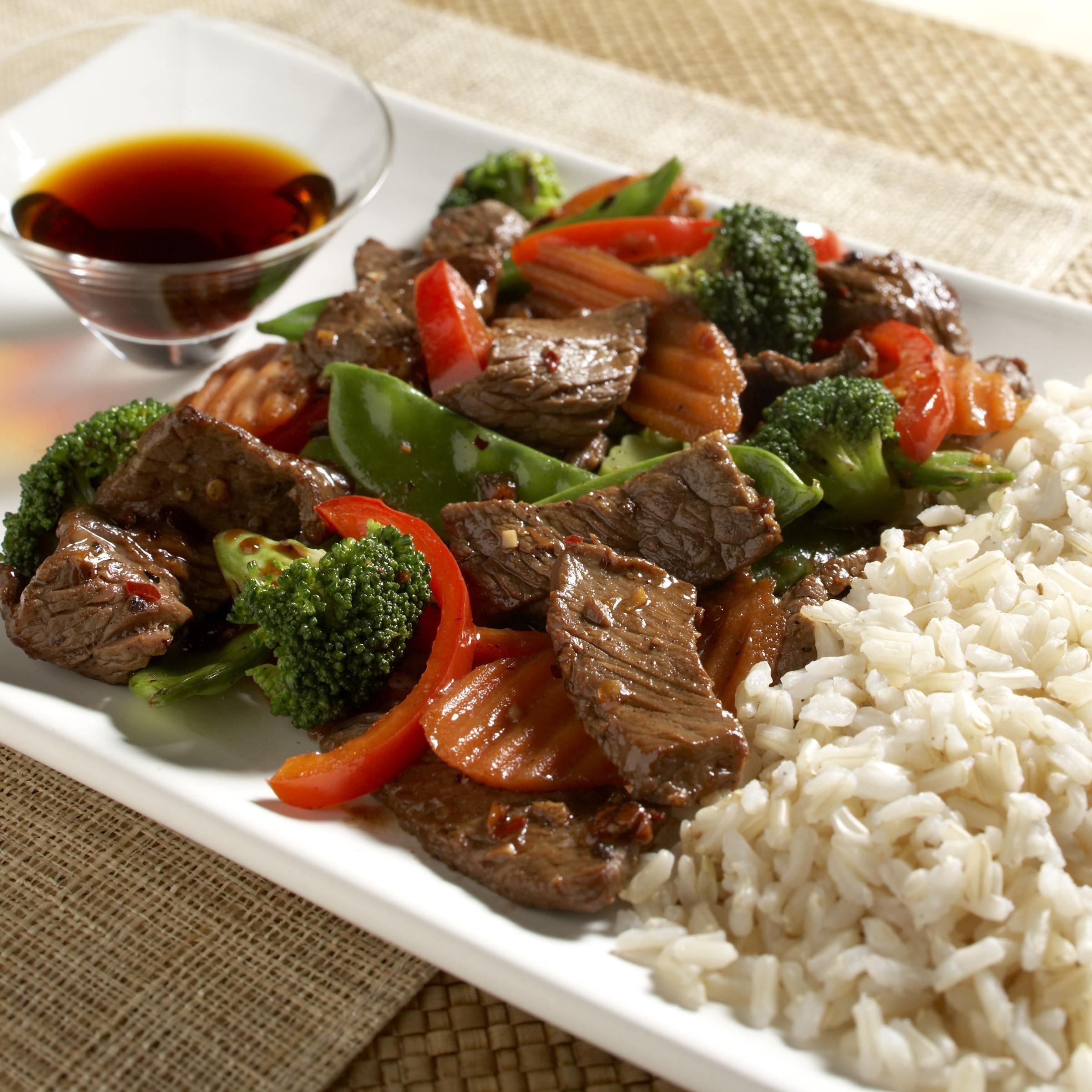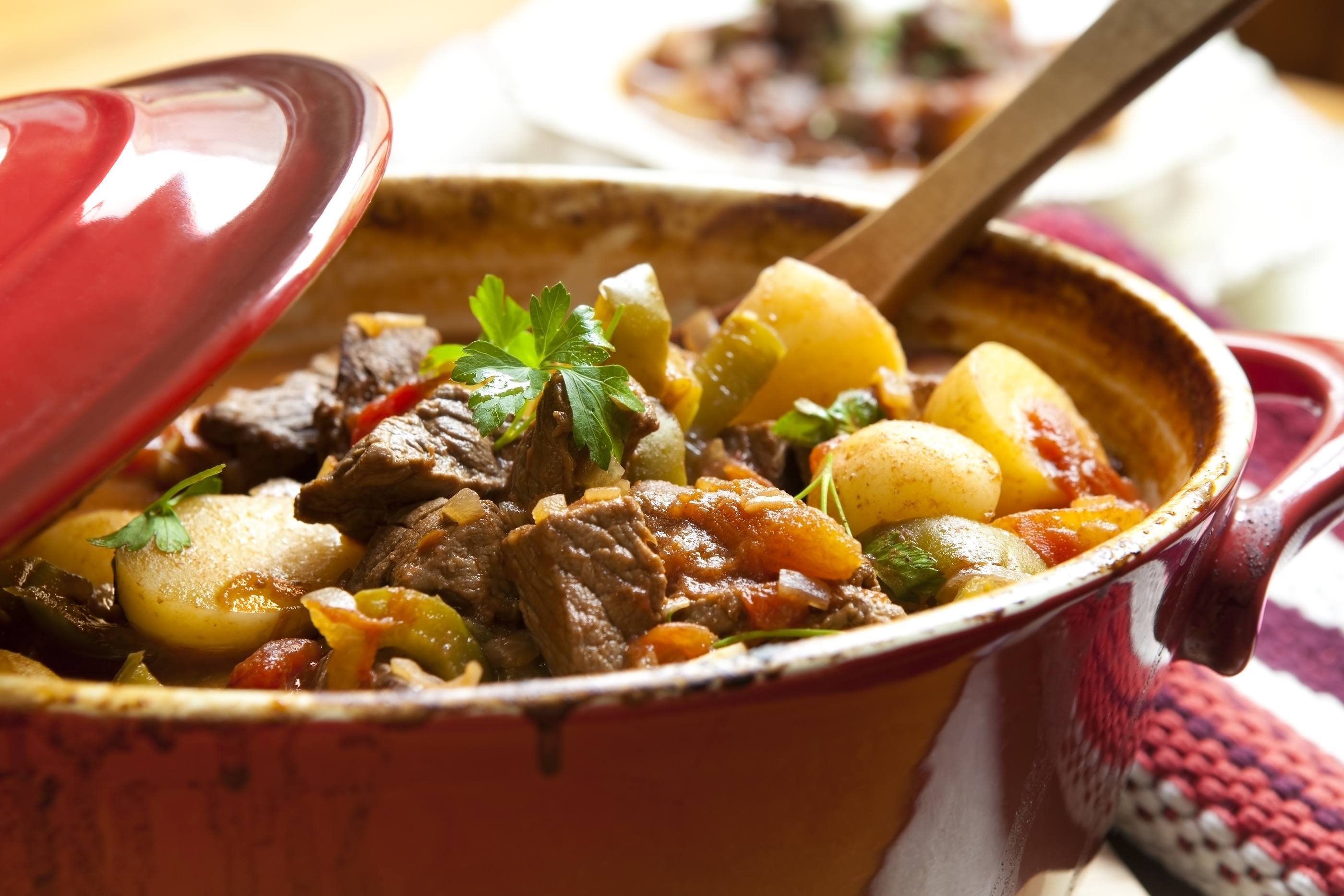Our cattle is grain-fed for fine marbling contributing to the flavor and juiciness of our beef. Expertly aged to enhance the melt-in-your-mouth tenderness. Every cut of our beef is hand-selected for consistency and hand-cut in stores daily.
Cooking Tips
- An instant-read internal meat thermometer is the most accurate way to judge doneness. Always monitor the heat. If it is too high, your beef can overcook on the outside and not cook on the inside.
- Grill and sauté with medium heat, stir-fry with medium-high heat, and use low heat for moist-heat cooking methods like braising.
- Beef should rest 5 to 10 minutes before being cut to give the juices time to reabsorb into the beef after cooking. Plan accordingly: As beef rests, the internal temperature will continue to rise 5°F to 10°F.
- Follow the temperatures below to cook beef to your liking:
Cooking Methods
Grill
Quickly cooking beef directly over high heat (400°F to 500°F), usually done with steaks, creates a lovely browned exterior with an interior that can range from rare to well-done. Slowly grilling with indirect heat (300°F to 400°F), the gas turned off on one side, or the coals banked to one side, and the lid closed is grill-roasting. This method is used for bigger cuts of beef like roasts. Barbecuing is another variation of indirect grill-roasting, but at even lower temperatures (250°F to 300°F) and often with a rub, sauce or soaked hardwood chips on the fire to create a smoky flavor.
Roast
Oven-roasting seems deceptively simple, but a little tinkering with cooking times and temperatures can elevate it to an art form. The trick is to roast the beef without drying it out. Tying the roast into a compact shape will help with that. Searing the beef to seal in its juices helps as well. But the basics don’t change: Place a roast, uncovered, in a 250°F to 300°F oven and slowly roast to your doneness preference.
Braise
The fancy French word for pot-roasting is braising. To braise beef, first sear it in a small amount of olive oil to a nice brown. Then, with the beef half-covered in liquid, simmer gently in a sealed pot until fork-tender. Braising is great for cuts that require longer cooking times to become more tender.
Stew
Stewing is similar to braising, but the beef is cut into bite-sized chunks and cooked in more liquid, frequently with vegetables.
Sear
Searing improves the appearance and flavor of beef as it is browned before continuing to cook by roasting, stewing or braising. When meat browns, the flavors become more complex, and complex is good. Sear beef in a heavy-bottomed pan with a tablespoon of olive oil. Start with beef that has been patted dry with paper towels. (Moisture boils at 212°F which prevents searing – a result of the meat surface exceeding 300°F.) When the oil is very hot, add the beef and leave it to brown without moving it to develop a nice brown crust. Turn to sear the cut on all sides. When finished, the brown bits left in the pan are called fond and make delicious pan sauces.
Sauté or Stir-fry
Whether you use a wok, sauté pan or cast-iron skillet, sautéing and stir-frying are similar to pan-searing but with a little more oil and a little less heat. The difference between sautéing and stir-frying is basically the size of the meat you’re cooking and whether the beef is stirred while cooking or not. Bigger pieces of beef are sautéed and left alone to brown. Stir-frying uses smaller pieces of beef that are moved constantly while cooking. Some cooks stir-fry with water instead of oil for recipes with lower fat content.
Cocotte
Cooking beef in a tightly sealed pot without additional liquid is called beef en cocotte. This cooking method is perfect for recipes in which the flavors, having not been diluted by liquids, are meant to be more intense.
When to Marinate
There are two basic marinades. Some are made of an acidic liquid like vinegar, wine, the juice of lemons, limes or oranges, or a combination of these. Others are made with natural protein-dissolving tenderizing enzymes like those found in fresh ginger, pineapple, papaya, kiwi and figs. Marinades are seasoned with any flavorful, spicy, fragrant or aromatic ingredients that taste good together, including fresh or dried herbs or spices, chile peppers, onions, garlic, ginger or citrus zest. Marinades and rubs are primarily flavor enhancers, but both have other benefits. Liquid marinades can be used to help tenderize some cuts of beef. Rubs are helpful in sealing in juices and help form a delicious crust.
Marinating Tips
- Allow ¼ to ½ cup of marinade for each one to two pounds of beef.
- When tenderizing, marinate for at least six hours but no more than 24 hours.
- Tender cuts such as tenderloin or top sirloin only need to marinate for 15 minutes to 2 hours to soak up the flavor.
- ALWAYS marinate in the refrigerator, NEVER at room temperature. Be sure to use a nonreactive glass, ceramic or stainless steel container. Or, you can place the beef and the marinade in a heavy zip-top bag with the air squeezed out making sure to turn it often to be sure all surfaces benefit from the marinade.
- NEVER save and reuse a marinade. If you’re planning to use the liquid later for basting or to serve it as a sauce, reserve a portion of it before adding uncooked beef.
- Remove beef from marinade and pat dry with a paper towel before cooking to prevent steaming and to encourage browning.
Wine Pairings
A lot has been said about which wines to pair with which foods. If you like following rules, that’s great. But everyone’s palate is different. Pairing involves experimentation. We suggest that you start light and move to dark. If you serve hors d’oeuvres or salad, start with champagne or a white wine. As you move to the heavier, richer parts of the meal, especially a beef entree, move to reds. End a meal with sweeter wines.
Sample pairings:
Strip Steak – Cabernet Sauvignon
T-Bone – Pinot Noir
Top Sirloin Roast – Sauvignon Blanc

